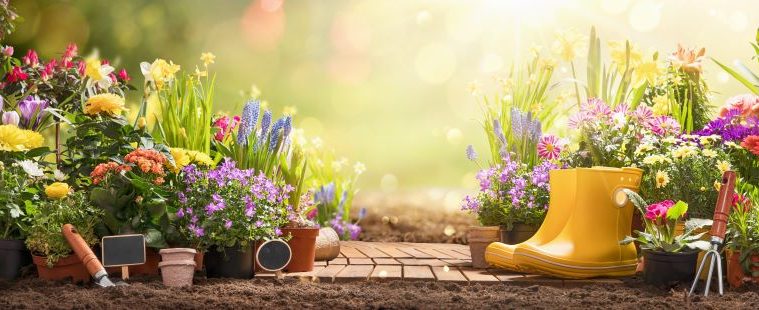Anyone who’s engaged in gardening beyond mowing the lawn and trimming the hedge will tell you that it’s not as easy as it looks. Certainly, spending time working in your garden has many benefits, in terms of getting closer to nature, improving your mental and emotional well-being, growing your food and so on but it can also be extremely labour-intensive. That is frustrating when the effort put in fails to bear fruit, and gardening is susceptible to significant setbacks that are often entirely out of your control. Gardening isn’t for everyone, and if you don’t have the temperament to put up with the work and disappointment, then you might think that it just isn’t worthwhile.
That doesn’t mean you should immediately concrete over your flower beds and turn them into a patio, however. Whether your garden is large, small or practically non-existent, with not much more space than a back yard or even just a windowsill, there are ways to reap many of the benefits of gardening with less effort. Spending more time outdoors can help you think more clearly, but container gardening is possible in almost any home environment, no matter how limited your outdoor space.
The benefits of container gardening
You can grow almost any plant in a container, including fruit and vegetables, herbs, flowers, shrubs and trees. If you already have a garden then moving your cultivated crops and bulbs to pots will save you time, effort and energy in the long run. Potted plants can be moved to different locations when that is necessary or advantageous. Individual difficulties can be more easily diagnosed and remedied. A blight affecting one container is less likely to spread to its neighbours if they are not all sharing the same soil.
Managing your garden
If you’re planning a serious garden overhaul, it’s a good idea to get professional help, as this will save you money in the long run. Draw up a proper plan for a low maintenance garden, and get help with tree surgery and other major tasks. There are many competent arborists in Wimbledon who can tackle sprawling shrubbery and intrusive branches. A consultation on the best approach to take will also save you backtracking on mistakes or after having second thoughts.
Choosing your containers
It doesn’t matter so much what your containers are made of, but the bigger they are, the better. The more compost they can hold, the more moisture will be stored. Plastic, wood and ceramics are all good, but be aware that the clay in terra cotta pots sucks the water out of the soil, so line with plastic or use a stone sealing product. Don’t use metal or dark coloured containers as these can heat up and cook your roots. With vegetables, make sure you leave enough room for them to grow and spread their roots.
Make sure that your containers have adequate drainage to prevent drowning or root rot. This might consist of one large hole or several small ones. You can drill them yourself if necessary. Make sure the drainage holes aren’t blocked by a hard surface underneath your containers. If needed, elevate your pots with stands.
Positioning
Most plants need at least six hours of direct sunlight every day. It’s easy to overestimate how much sun a particular part of your home or garden receives, so make an accurate assessment by checking and recording on the level of light every half an hour. A south or west-facing location is best for sun, and try to keep them sheltered from the wind. If placing on a wall or balcony, secure your containers firmly.
Feeding and watering
Some plants need more water than others, and potted plants generally need watering more often than those in the ground. Peas and tomatoes are particularly thirsty. Keep the soil moist but don’t overdo it. Push your finger an inch into the soil: if it’s dry, add water. In the height of summer, you might need to water your plants twice a day, but this is as high-maintenance as it gets.
Use high-quality potting soil, preferably organic. Don’t use garden soil in your containers, as it won’t drain properly and could be importing weeds or parasites. Your soil may have fertiliser mixed in but if not you can incorporate an organic granular fertiliser into the soil before potting. Add slow-release fertiliser or liquid feed like fish emulsion or seaweed every fortnight during the growing season.
Container gardening is a great way to simplify an existing garden or to enjoy growing flowers and vegetables in a limited space. Low maintenance gardening then gives you more time to enjoy the fruits of your labours, or to just sit in the sun and enjoy the great outdoors at your leisure.

